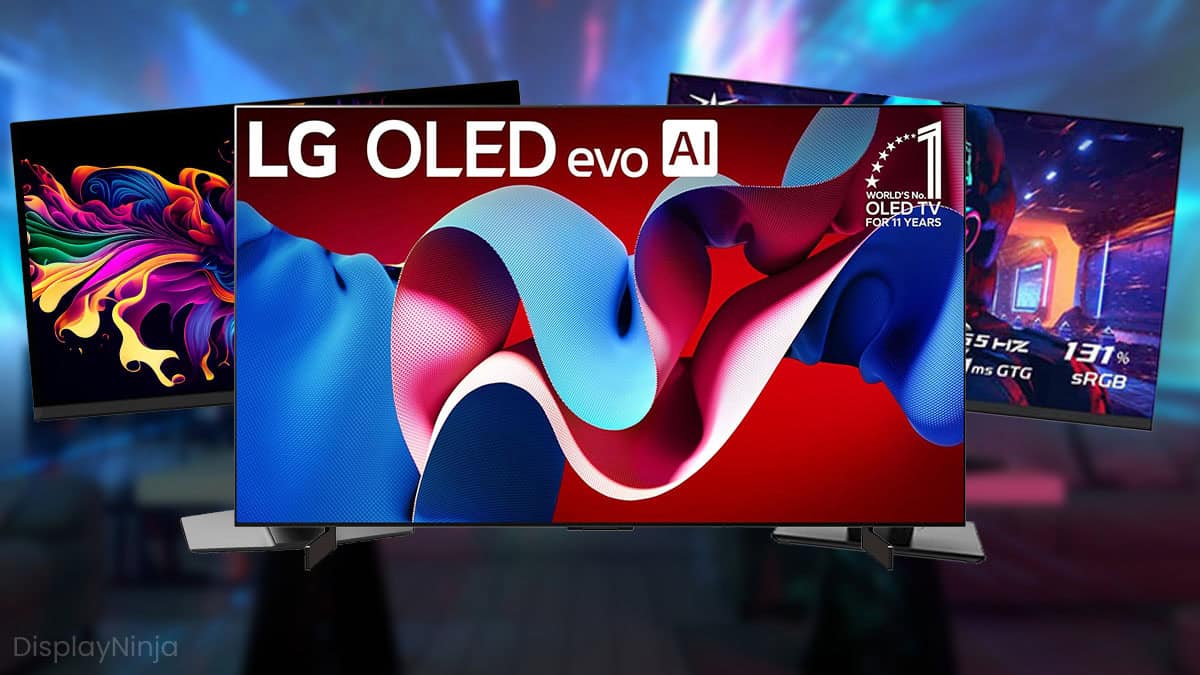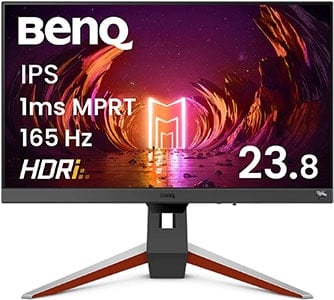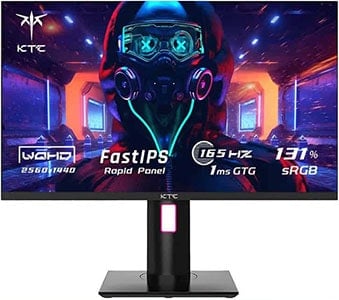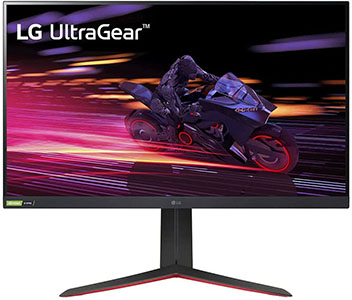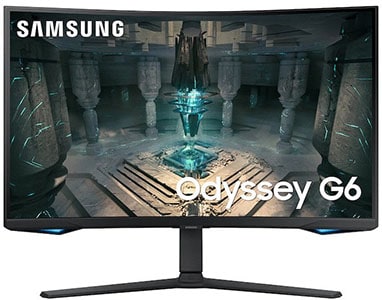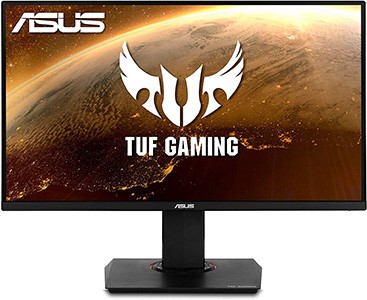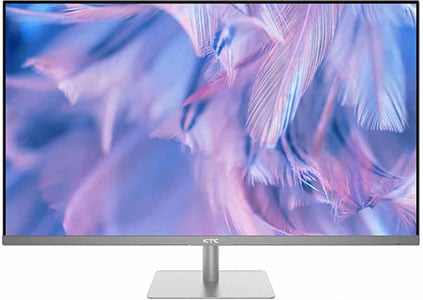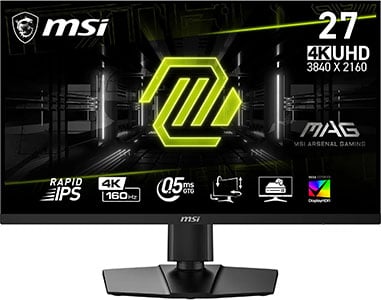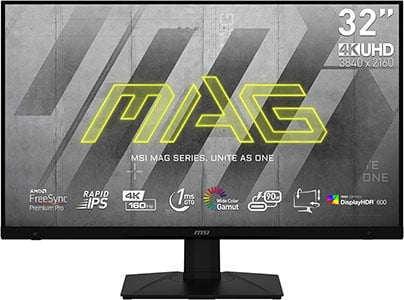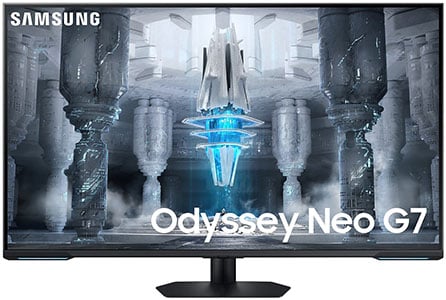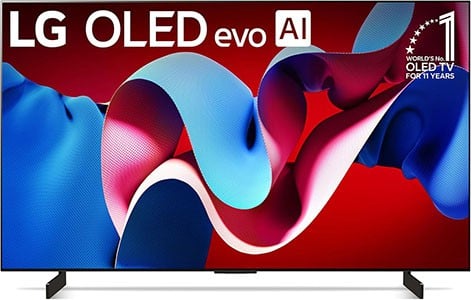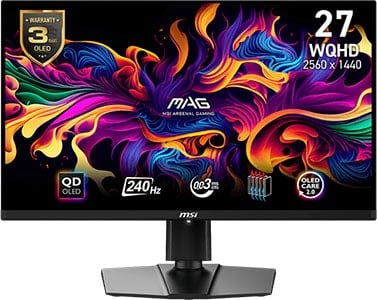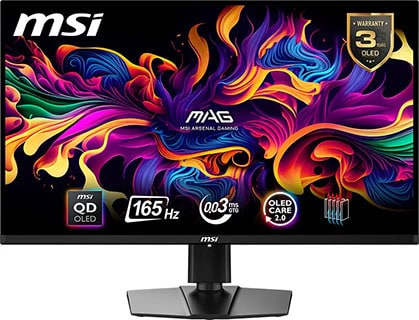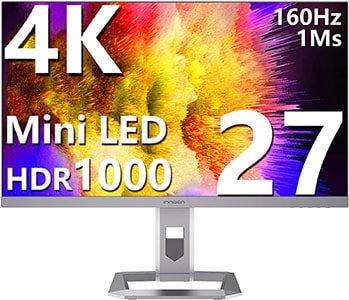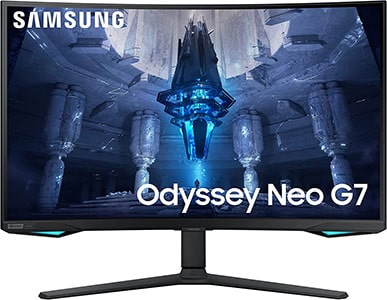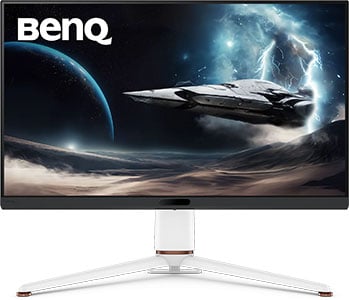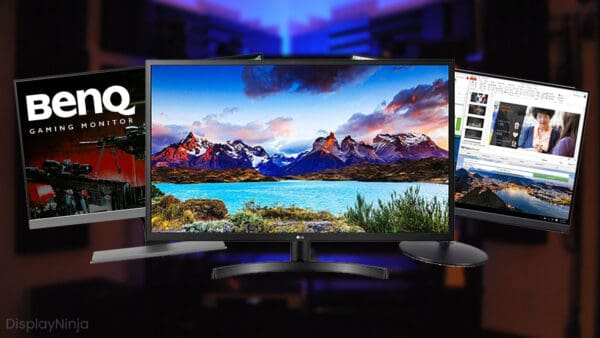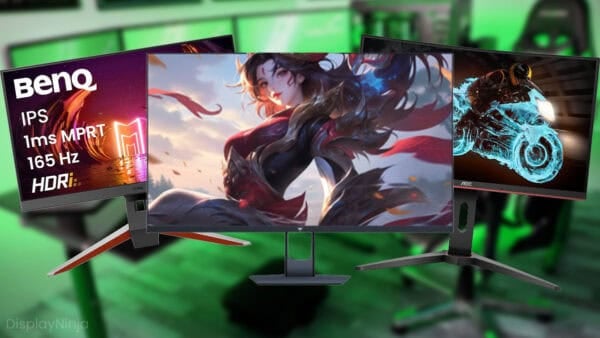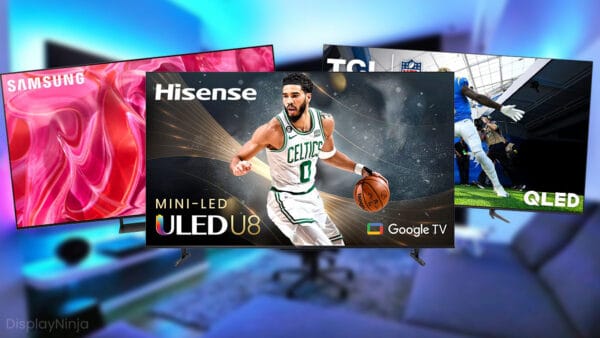Need a new monitor for the PlayStation 5 or the Xbox Series X that will take advantage of your console’s mighty hardware?
In this guide, you’ll find the absolute best models currently available, as well as everything you need to know in order to pick the monitor that suits you most based on screen resolution, refresh rate, panel type, and more!
| Type | Monitor | Size | Resolution | Panel | Refresh Rate | |
|---|---|---|---|---|---|---|
| Best 1080p 120Hz Gaming Monitor | 24” | 1920x1080 | IPS | 165Hz | ||
| Best 1440p 120Hz Gaming Monitors | 27” | 2560x1440 | IPS | 170Hz | ||
| 32” | 2560x1440 | IPS | 165Hz | |||
| 27” 32” | 2560x1440 | VA | 240Hz | |||
| Best 4K 60Hz Gaming Monitors | 28” | 3840x2160 | IPS | 60Hz | ||
| 32” | 3840x2160 | VA | 60Hz | |||
| Best 4K 120Hz Gaming Monitors | 27” | 3840x2160 | IPS | 144Hz | ||
| 32” | 3840x2160 | IPS | 160Hz | |||
| 43” | 3840x2160 | VA | 144Hz | |||
| Best HDR Gaming Monitors | 42” 48” | 3840x2160 | OLED | 144Hz | ||
| 27” | 2560x1440* | OLED | 240Hz | |||
| 32” | 3840x2160 | OLED | 165Hz | |||
| 27” | 3840x2160 | IPS | 160Hz | |||
| 32” | 3840x2160 | VA | 165Hz | |||
| 32” | 3840x2160 | IPS | 144Hz |
**16% OFF CODE: 16KTCAQ8
To unleash the full power of the PS5 and the Xbox Series X/S, you’ll ideally want a monitor with an HDMI 2.1 port for 4K 120Hz support.
At the moment, there aren’t many HDMI 2.1 gaming monitors out there, but we will list the best models available as well as all the upcoming displays worth keeping an eye on!
Note that you will only be able to take full advantage of 120Hz at 4K UHD in a few games since the 4K resolution is quite demanding. So, research a bit about how your favorite games run at 1080p, 1440p and 4K resolution in order to ensure you’ll get the desired performance/frame rate.
There are other benefits of having an HDMI 2.1 monitor as well.
First of all, the display will be more future-proof for newer consoles – and second of all, it allows you to enjoy both 4K 60Hz in 60FPS games and 1080p/1440p 120Hz in less demanding 120FPS titles if you can’t run the game at 4K 120Hz.
Further, the PS5 only supports variable refresh rate over HDMI 2.1, whereas the Xbox Series X/S can utilize Adaptive-Sync over HDMI 2.0 and HDMI 1.4 for VRR as well.
If you want to view our changelogs for this particular buying guide, you can do so at the end of this article.
Best 1080p 120Hz Monitor
If you just want an affordable but good gaming monitor to take advantage of 120FPS for the smoothest performance in competitive titles, 1080p is the way to go and the BenQ EX240 offers exceptional performance and image quality for the price.
BenQ EX240
Best 1080p 120Hz Monitor For PS5 & XSX
Size: 23.8″
Resolution: 1920×1080
Panel: IPS
Refresh Rate: 165Hz
VRR: FreeSync
The Pros:
- Accurate and rich colors
- Height adjustable stand, USB hub
- AMD FreeSync up to 165Hz
- Fast pixel response time speed
- Wide viewing angles
The Cons:
- IPS glow and mediocre contrast ratio (as expected from this panel technology)
About The Monitor
Keep in mind that not all 1080p 144Hz gaming monitors necessarily support the 1080p 120Hz mode on consoles.
Luckily, the BenQ EX240, which is among the most popular budget monitors for PC gaming, also supports 120Hz on the PS5 and Xbox consoles.
It offers vibrant colors and fast response time speed for an immersive and responsive gaming experience.
Image Quality
The monitor is based on a 23.8″ IPS (In-Plane Switching) panel. This technology offers 178° wide viewing angles, so the picture won’t shift in brightness, contrast, or color if you look at the screen at skewed angles.
Further, the BenQ EX240 features accurate, consistent and vibrant colors with ~115% sRGB color gamut size. Its static contrast ratio amounts to 1,100:1, which is standard for IPS panel monitors.
You won’t get as deep blacks as that of VA panels with a ~3,000:1 contrast ratio, but this panel technology has advantages of its own at this price range, such as a faster response time and more consistent colors.
Furthermore, the BenQ EX240 monitor has a decent 300-nit specified peak brightness, so the picture will be more than bright enough under normal lighting conditions.
Next, it has a quick pixel response time speed for minimal trailing visible behind fast-moving objects and low input lag of ~4ms, which makes for imperceptible delay.
Features

AMD FreeSync is supported with a 48-180Hz variable refresh rate (VRR) range, or 48-120Hz at 120Hz.
This technology allows the monitor to change its refresh rate dynamically, according to the frame rate generated by the GPU.
As a result, all screen tearing and stuttering are gone with no perceptible input lag introduced, which is the case with V-Sync.
Even when your FPS (Frames Per Second) drops below 48, AMD LFC (Low Framerate Compensation) kicks in with frame rate multiplication (47FPS -> 94Hz) to keep tearing at bay.
There’s also an MBR (Motion Blur Reduction) feature, which can reduce the amount of perceived motion blur by backlight strobing at the cost of image brightness.
However, MBR cannot be active at the same time as FreeSync on this monitor.
Other interesting features include Black eQualizer (improves visibility in darker games). Check out our BenQ EX240 review for more information.
Design & Connectivity
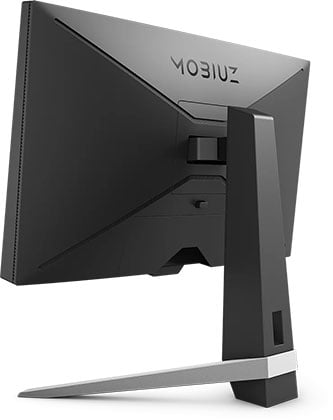
The monitor also has a sturdy and ergonomic stand with up to 100mm height adjustment, +/- 15° swivel, -5°/15° tilt and 100x100mm VESA mount compatibility.
Connectivity options include two HDMI 2.0 ports, DisplayPort 1.2, a headphone jack, dual 2.5W integrated speakers and a dual-USB 3.0 hub. The 1080p 120Hz mode is supported for the PS5 and Xbox consoles.
Alternatives
- LG 24GN600 / 24GN650, HP X24i / X24ih – no wide color gamut
- KTC H24T09P – wide color gamut and fast response time, but it has a fragile tilt-only stand
Best 1440p 120Hz Gaming Monitors
Both the PS5 and the Xbox Series X/S support 1440p 120Hz natively, but not all 1440p 144Hz+ gaming monitors support the ‘1440p 120Hz’ mode. They might only support 120Hz at 1080p. Further, not all monitors that support 1440p 120Hz can simultaneously run FreeSync, so we’ve selected only the best options for you below.
KTC H27T22
Best Value 1440p 120Hz IPS Gaming Monitor
Size: 27″
Resolution: 2560×1440
Panel: IPS
Refresh Rate: 170Hz
VRR: FreeSync
The Pros:
- Quick 1ms response time speed
- Vibrant colors and wide viewing angles, high pixel density
- 1440p 120Hz + FreeSync at the same time
- Fully ergonomic stand
The Cons:
- IPS glow and mediocre contrast ratio (as expected from this panel technology)
About The Monitor
The KTC H27T22 is one of the most affordable 1440p 144Hz+ gaming monitors that supports the 1440p 120Hz mode on the Xbox Series X and Series S — and that can simultaneously run FreeSync for tear-free gameplay.
On top of that, it’s one of the most affordable 1440p 144Hz+ displays, making for an amazing value for money.
For the PS5, you just get 1440p 120Hz support, but this is a limitation of the console, not the monitor.
This is a popular PC gaming monitor thanks to its fast IPS panel with a 1ms GtG pixel response time speed for zero ghosting in fast-paced games.
The IPS panel also provides you with a wide 95% DCI-P3 color gamut for vibrant and saturated colors, as well as an sRGB emulation mode for better accuracy.
Other specifications include a 1,000:1 static contrast ratio and a high 450-nit peak brightness.
Other interesting features of the monitor include Black Equalize (for better visibility in dark areas of games), various pre-calibrated picture modes for different genres, an on-screen timer, crosshair overlays and a refresh rate tracker.
Check out our in-depth KTC H27T22 review for more details.
Design & Connectivity
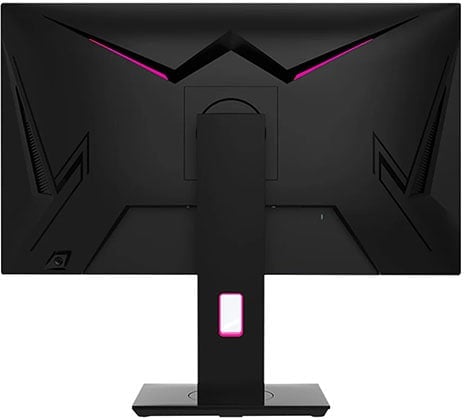
The stand of the monitor is sturdy and offers height adjustment up to 135mm, tilt by -5°/23°, +/- 45° swivel, +/- 90° pivot and 100x100mm VESA mount compatibility.
Connectivity options include two DisplayPort 1.4 inputs, two HDMI 2.0 ports (max 144Hz), a headphone jack and a USB port for firmware updates.
Alternatives
There are plenty of excellent 27″ 1440p high refresh rate IPS gaming monitors available nowadays ranging from $150 to $200 (depending on sale).
So, we recommend checking them all out and choosing whichever is the cheapest or according to your design/feature preference:
You can also get a 1440p 120Hz display below $200, such as the Koorui 27E6QC but it uses a curved VA panel with noticeable ghosting behind fast-moving objects, so it’s not recommended for fast-paced games.
LG 32GP750
32″ 1440p 120Hz IPS Gaming Monitor
Size: 32″
Resolution: 2560×1440
Panel: IPS
Refresh Rate: 165Hz
VRR: FreeSync
The Pros:
- Quick response time speed
- Accurate colors and wide viewing angles
- 1440p 120Hz + FreeSync at the same time
The Cons:
- IPS glow and mediocre contrast ratio (as expected from this panel technology)
- Design lacks swivel option
About The Monitor
The LG 32GP750 is basically the 32″ version of the KTC H27T22.
Image Quality
So, you get similar features and performance. However, since 1440p resolution is displayed on a larger 31.5-inch viewable screen, you get fewer pixels per inch.
This means that the image won’t be as crisp, but the bigger screen does provide a more immersive viewing experience. So, the choice between the two is entirely up to personal preference.
The LG 32GP750 has a static contrast ratio of 1,000:1, full sRGB color space coverage for vivid colors without over-saturation, a peak brightness of 400-nits, 178° wide viewing angles and a rapid 1ms GtG response time speed.
It also supports VRR up to 165Hz and has standard gaming features, such as Black Stabilizer, crosshair overlays and on-screen timers.
Design & Connectivity
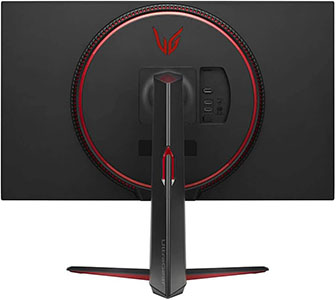
The stand of the monitor is sturdy and offers height adjustment up to 110mm, -5°/15° tilt, 90° pivot and 100x100mm VESA mount compatibility.
Connectivity options include DisplayPort 1.4, two HDMI 2.0 ports and a headphone jack.
Alternatives
- Gigabyte M32Q – another popular 32″ 1440p 170Hz IPS model. It has a built-in KVM switch, but it has lower brightness and not as wide color gamut
- Gigabyte M32QC – A cheaper 32″ 1440p 165Hz FreeSync gaming monitor with a curved VA panel; it has a higher contrast ratio, but slower response time speed
If you’re looking for something cheaper with an IPS panel, check out the Gigabyte GS32Q (tilt-only stand), though we can’t confirm if it supports the 1440p 120Hz console modes.
Samsung Odyssey G6
Best 1440p 120Hz VA Gaming Monitor
Size: 27″ or 32″
Resolution: 2560×1440
Panel: VA
Refresh Rate: 240Hz
VRR: FreeSync
The Pros:
- Quick 1ms response time speed
- Vibrant colors, high contrast ratio, and strong peak brightness
The Cons:
- The aggressive 1000R screen curvature won’t appeal to some gamers
- VRR brightness flickering in dark scenes of games with fluctuating frame rates (expected drawback of OLED and VA panels)
About The Monitor
Unlike the KTC H27T22 and the LG 32GP750, the Samsung Odyssey G6 uses a curved VA panel with a higher contrast ratio for much deeper blacks.
It’s available in both 27″ and 32″ sized variants with identical specifications except for the screen size, and therefore, pixel-per-inch ratio.
Image Quality
Granted, you won’t be able to use the monitor’s full 240Hz refresh rate, but if you want a 1440p 120Hz gaming monitor with a VA panel and a fast response time speed, you don’t have any other options.
Samsung’s G6 displays are the only widescreen VA panel monitors with a 1ms GtG response time speed currently available, which allows them to provide inky and vivid blacks without any smearing in fast-paced games.
You can also use 1440p 120Hz and FreeSync at the same time with the Xbox Series X and Series S consoles.
The Samsung G6 can also accept a 4K UHD signal from the console as well as HDR, but in this case, you are limited to 60Hz without FreeSync.
Further, the G6 monitors have a high 600-nit peak brightness, a high 2,500:1 contrast ratio, a wide 90% DCI-P3 color gamut and 8 dimming zones, so there’s a meaningful improvement in HDR image quality.
You can choose between 1440p 120Hz + FreeSync in games where the frame rate is more important to you for a smoother performance, such as competitive FPS titles – and “4K” with HDR for the more graphically-oriented games for better image quality.
Now, the Odyssey G6 models feature integrated Tizen OS with smart features, such as Samsung TV Plus, Gaming Hub, Bixby, SmartThings, Microsoft 365, DeX, Bluetooth, WiFi and more. You also get a remote controller.
The Odyssey G7 models are the same monitors but without built-in smart features. Visit our Samsung Odyssey G7 review for more information.
Design & Connectivity

Note that the Samsung G6 monitors have a very steep 1000R screen curvature. Some users might not like it, some might love it, and some won’t give it much thought. Overall, the curvature is more pronounced on the 32″ model, but you get used to it.
The stand offers a good range of ergonomics including up to 120mm height adjustment, 90° pivot, -9°/13° tilt, +/- 15° swivel and 100x100mm VESA mount compatibility. There’s also RGB lighting at the back and front of the monitor.
Connectivity options include two DisplayPort 1.4 inputs, one HDMI 2.0 port, a headphone jack and a dual-USB 3.0 hub.
Alternatives
- KTC H27T22 – more affordable 27″ 1440p 240Hz model with a fast flat-screen VA panel
- KTC H32S25E – more affordable 32″ 1440p 240Hz curved VA panel
Best 4K 60Hz Gaming Monitors
If you don’t care about 120FPS and just want an enjoyable 4K experience at 30FPS or 60FPS, these are the best 4K 60Hz gaming monitors for the PS5 and the XSX.
ASUS VG289Q
Best Value 4K 60Hz Console Gaming Monitor
Size: 28″
Resolution: 3840×2160
Panel: IPS
Refresh Rate: 60Hz
VRR: FreeSync
The Pros:
- Good response time speed
- Vibrant colors and wide viewing angles, high pixel density
- AMD FreeSync
- Fully ergonomic stand
The Cons:
- IPS glow and mediocre contrast ratio (as expected from this panel technology)
About The Monitor
The ASUS VG289Q is an affordable 28″ 4K gaming monitor yet it features an IPS panel with wide viewing angles, a wide color gamut, and a quick response time speed!
On a 28″ screen, 4K resolution results in a very high pixel density of 157 PPI meaning that you’ll have crystal-clear details even if you’re sitting really close to the screen.
It also has a wide 90% DCI-P3 gamut coverage for rich and saturated colors, while the peak brightness is excellent at 350-nits; the contrast ratio is as expected from IPS technology and amounts to 1,000:1.
Useful gaming features include FreeSync support with a 40-60Hz VRR range over both DisplayPort and HDMI – allowing you to use it with the Xbox Series X/S.
You also get various picture presets, custom crosshair overlays, a refresh rate tracker, on-screen timers, and Shadow Boost (improves visibility in darker scenes of games).
Design & Connectivity
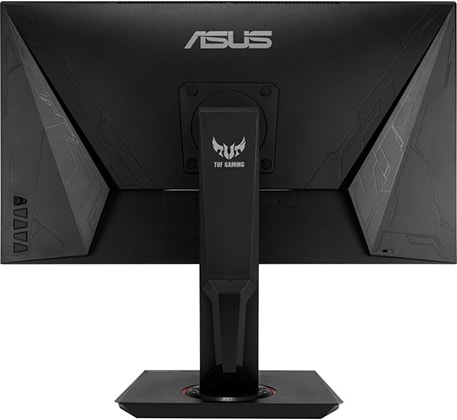
The ASUS VG289Q features a fully ergonomic design with height adjustment up to 150mm, +/- 62° swivel, -5°/20° tilt, 90° pivot and 100x100mm VESA mount compatibility.
Connectivity options include two HDMI 2.0 ports, DisplayPort 1.2, a headphone jack and an audio line-in port for the dual 2W integrated speakers.
Alternatives
- ASUS VG289Q1A – tilt-only version of the monitor
- Acer CBL282K smiiprx – based on the same 28″ 4K 60Hz IPS panel with 90% DCI-P3 and a fully ergonomic stand. Can be found on sale for $230.
KTC A32Q8
Best 32″ 4K 60Hz Monitor For Console Gaming
Size: 32″
Resolution: 3840×2160
Panel: VA
Refresh Rate: 60Hz
VRR: FreeSync
The Pros:
- High contrast ratio
- Vibrant colors
- High pixel density
- built-in Google TV
The Cons:
- Tilt-only stand
About The Monitor
If you want a larger 4K 60Hz gaming monitor, we highly recommend the KTC A32Q8.
16% OFF CODE: 16KTCAQ8
Image Quality
The monitor has a wide 83% DCI-P3 color gamut, a peak brightness of 250-nits, a high contrast ratio of 3,000:1 and a high 140 (PPI) pixel density.
It features Google TV smart OS as well as AMD FreeSync and ALLM support for console gaming (VRR is not supported on the PS5).
Check out our in-depth KTC A32Q8 review for more details.
Design & Connectivity
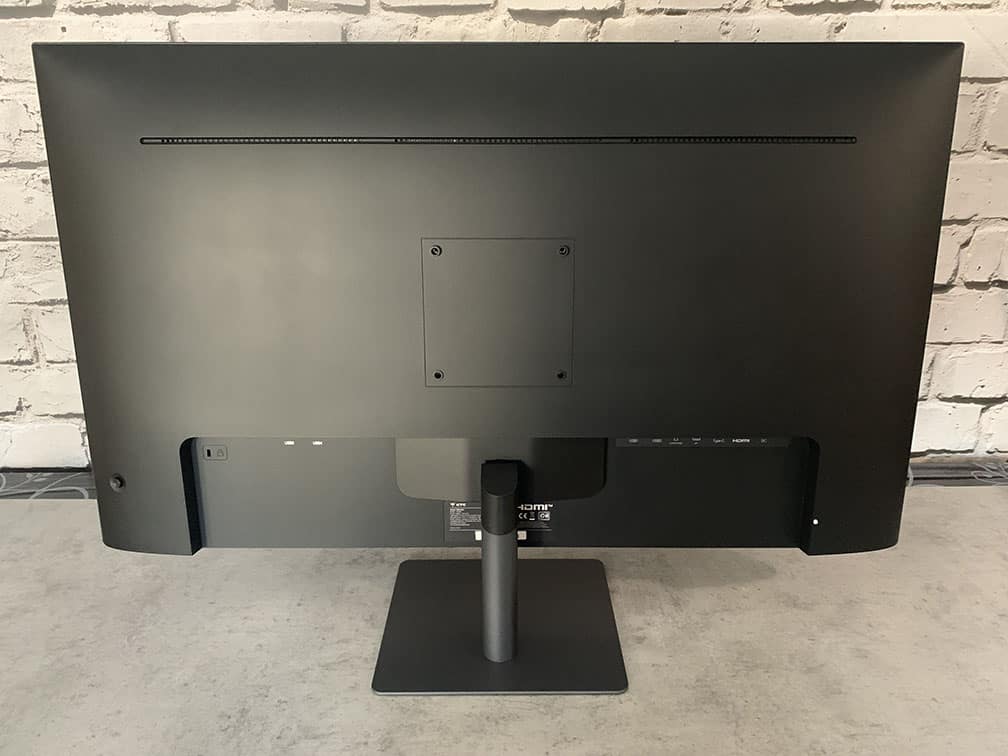
The stand of the monitor is tilt-only, but it’s VESA mount compatible. The monitor also has WiFi and Bluetooth support.
Connectivity options include HDMI 2.0, DP 1.4, a USB-C port with DisplayPort Alternate Mode and 65W Power Delivery, allowing you to charge a compatible laptop, four downstream USB-A ports, a headphone jack and integrated speakers.
Alternatives
- LG 32SQ730S – LG’s smart monitor with WebOS instead of Google TV. It has a height adjustable stand, RJ45 and VRR support, but it can be up to $200 more expensive.
- Samsung M70D – Samsung’s monitor with Tizen OS, can be found on sale for $330 but lacks VRR support
- Samsung M80D – Based on the same panel as the M70D, but features an ergonomic stand and a built-in webcam. Its price goes up to $700 though.
- Samsung M50D – a 32″ smart model with 1920×1080 resolution
If you’re looking for a 32″ 4K 60Hz IPS monitor, the LG 32UP83A is the cheapest model available. It also has a USB-C port with 60W Power Delivery.
Best 4K 120Hz Gaming Monitors
Want the best of both worlds? Check out the best 4K 120Hz gaming monitors available with HDMI 2.1 connectivity!
MSI MAG274UPF E2
Best Budget 4K 144Hz HDMI 2.1 Gaming Monitor
Size: 27″
Resolution: 3840×2160
Panel: IPS
Refresh Rate: 160Hz
VRR: FreeSync
The Pros:
- Quick 1ms response time speed
- Vibrant colors and wide viewing angles, high pixel density
- 4K HDR 120Hz + VRR at the same time
The Cons:
- IPS glow and mediocre contrast ratio (as expected from this panel technology)
About The Monitor
The MSI MAG274UPF E2 is one of the most affordable 4K 144Hz gaming monitors with HDMI 2.1. It’s considerably cheaper than the alternatives, yet it doesn’t sacrifice anything crucial to achieve such as low price.
Image Quality
Besides providing you with 120Hz at 4K UHD for the PS5 and the Xbox Series X (and up to 144Hz over DisplayPort for PC), the MSI MAG274UPF E2 also boasts exceptional image quality and buttery-smooth performance.
To start with, the monitor has a wide 98% DCI-P3 color gamut (~135% sRGB) and comes with a calibrated sRGB emulation mode.
Next, it has a high 400-nit peak brightness. Sadly, the contrast ratio is around 1,000:1, but this is expected from IPS technology, even at this price range.
Thanks to the rapid 1ms GtG pixel response time speed, there’s no visible ghosting behind fast-moving objects making it ideal for competitive first-person shooters.
Noteworthy features include crosshair overlays, Night Vision, various picture presets and the MPRT-Sync backlight strobing technology.
Design & Connectivity
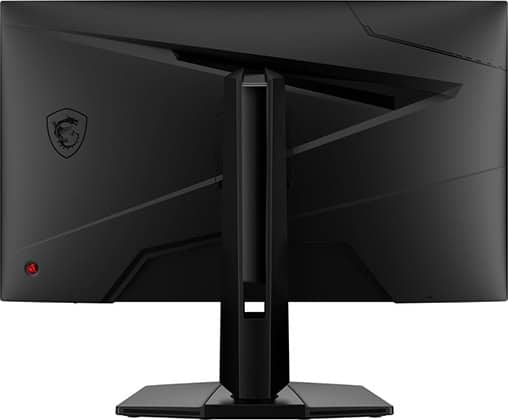
The design is robust and versatile with a good range of ergonomics, such as +/- 30° swivel, +/- 90° pivot, 130mm height adjustment, -5°/20° tilt and 75x75mm VESA mount compatibility.
Connectivity options include two HDMI 2.1 inputs, DisplayPort 1.4 with DSC, USB-C (DP 1.4 Alt Mode, 15W PD) and a headphone jack.
Alternatives
- MSI MAG274RFW – the same monitor but in white color
- KTC H27P22S – a bit more affordable model without USB-C
- Acer XB273K V3bmiiprx – another model without USB-C that sometimes goes on sale for below $400
- LG 27GR93U – hardware calibration support
MSI MAG323UPF
Best Value 32″ 4K 144Hz HDMI 2.1 Gaming Monitor
Size: 32″
Resolution: 3840×2160
Panel: IPS
Refresh Rate: 160Hz
VRR: FreeSync, HDMI 2.1 VRR
The Pros:
- Quick 1ms response time speed
- Vibrant colors and wide viewing angles, high pixel density
- 4K HDR 120Hz + VRR at the same time
- Ergonomic design and rich connectivity options
The Cons:
- IPS glow and mediocre contrast ratio (as expected from this panel technology)
About The Monitor
If you’re looking for a 32″ 4K 144Hz gaming monitor, the MSI MAG323UPF offers the best value for money, but there are a few things to keep in mind.
Image Quality
MSI’s monitor has only 16 dimming zones and it is edge-lit, so it’s not nearly as effective at improving the ‘dynamic range’ as some of the true mini LED FALD and OLED HDR displays we’ll get into next.
The MSI MAG323UPF does have a 95% DCI-P3 wide color gamut for vibrant colors (with an available sRGB mode) and a strong 600-nit peak brightness.
It’s an overall great 32″ 4K 144Hz gaming monitor, but if you want good HDR image quality, you should check out true HDR displays below.
Other than that, the MSI MAG323UPF has a rapid 1ms GtG pixel response time speed and supports a variable refresh rate up to 160FPS for tear-free gameplay. Other features include Night Vision, on-screen timers, a refresh rate tracker and PiP/PbP support.
Design & Connectivity
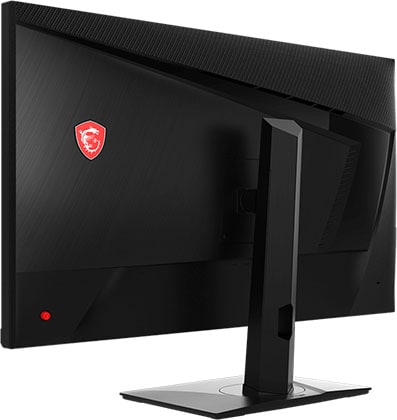
The stand is robust and fairly ergonomic with up to 100mm height adjustment, -5°/20° tilt, +/- 45° swivel and 100x100mm VESA mount compatibility.
Connectivity options include USB-C (DP 1.4 Alt Mode, 90W PD), DisplayPort 1.4 with DSC, two HDMI 2.1 ports (with HDMI 2.1 VRR support for the PS5), a USB 2.0 hub (3 downstream + 1 upstream) and a headphone jack.
Alternatives
- Dell G3223Q – Another 32″ 4K 160Hz IPS option with similar specs
- Gigabyte M32UC and MSI G321CU – 32″ 4K 144Hz monitors with a curved VA panel. They’re more affordable, have a higher contrast ratio for deeper blacks, but have a slower response time speed and flawed VRR performance
- LG 32GQ950 – LG’s model with an A-TW polarizer (helps with IPS glow) and a high 1000-nit peak brightness. However, it only has a few dimming zones, so the HDR experience is subpar. It goes for $800 – $1,300, so you can get a proper HDR display in this price range instead
- LG 32GR93U – similar to the MSI MAG323UPF but with a lower 400-nit peak brightness
If you don’t mind slower pixel response time speed and screen tearing, you can find a cheaper 32″ 4K high refresh rate gaming monitor with a curved VA panel, the MSI MAG321CUP.
Samsung S43CG70
Best 43″ LCD Console Gaming Monitor
Size: 42.5″
Resolution: 3840×2160
Panel: VA
Refresh Rate: 144Hz
VRR: FreeSync, HDMI 2.1 VRR
The Pros:
- Vibrant colors, high contrast ratio, and strong peak brightness
- 4K 120Hz + VRR, DisplayHDR 600
- Plenty of features, including VRR up to 144Hz
The Cons:
- Minor ghosting in fast-paced games, more so in darker scenes
- Only 360 dimming zones
- VRR brightness flickering in dark scenes of games with fluctuating frame rates (expected drawback of OLED and VA panels)
About The Monitor
If you want a large 43″ gaming monitor with HDMI 2.1, the 43″ Samsung Neo G7 is the best model available, that is, if you can find it at its ~$650 discounted price and don’t want an OLED display; otherwise, we recommend the C4 instead, which we’ll get into next.
Image Quality
4K UHD resolution looks incredibly crisp even on 43″ sized screens as you get a high pixel density of 103.67 PPI.
However, like most 43″ TVs, the Samsung S43CG70 uses a panel with a BGR subpixel layout. This can make text appear somewhat smudgy, but it’s not noticeable while gaming since you’ll be sitting far from the screen.
If you plan on using the monitor for PC or work too, the BGR layout might bother you a bit, but some people can tolerate it; sadly, there are no 43″ 4K monitors with a regular RGB layout.
The monitor has a high 700-nit peak brightness (450-nits for a full white window), a high 4000:1 contrast ratio, and a wide 95% DCI-P3 color gamut for vibrant and rich colors.
There are only 360 local dimming zones, so just how good the HDR image looks will depend on the scene.
Features
The GtG (gray-to-gray pixel transition) response time is slow, so some smearing will be noticeable in fast-paced games, more so in darker scenes. It’s also prone to VRR brightness flickering.
Further, the monitor has integrated Tizen OS with smart applications, such as DeX, Microsoft 365, Bixby, etc.
Design & Connectivity
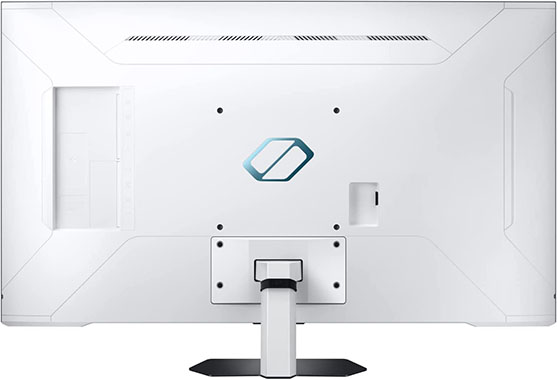
The Samsung S43CG70 features a sleek and sturdy design; it’s not ergonomic, but it is VESA mount compatible via the 200x200mm pattern.
Connectivity options include DisplayPort 1.4 with DSC, two HDMI 2.1 inputs, a dual-USB 3.0 hub, dual 20W integrated speakers, RJ45, WiFi and Bluetooth. You also get a remote controller.
Alternatives
- Gigabyte FV43U – similarly priced 43″ 4K 144Hz gaming monitor. Even though it has DisplayHDR 1000 certification, the Neo G7 offers better image quality with HDR-600 due to its higher local dimming zone count. The FV43U does get a bit brighter, has a wider color gamut and a built-in KVM switch, but since it has only 8 dimming zones, HDR content won’t look as good.
If you’re mainly interested in HDR, we recommend the LG OLED42C4 mentioned below as it offers an infinite contrast ratio, rapid response time, better VRR performance, wider viewing angles and a wider color gamut.
The Samsung S43CG70 is a good alternative only if you’re too worried about the burn-in and lower brightness of OLED panels.
Best HDR Gaming Monitors
Looking for a monitor with proper HDR support for your console? Here are the best models available!
LG OLED C4
Best Value HDR Gaming Display
Size: 42″ or 48″
Resolution: 3840×2160
Panel: OLED
Refresh Rate: 144Hz
VRR: FreeSync, HDMI 2.1 VRR
The Pros:
- Infinite contrast ratio, wide color gamut, high peak brightness
- No backlight bleed or IPS/VA glow
- Plenty of features, including VRR up to 120Hz
- Quick response time speed
- HDMI 2.1, USB hub
The Cons:
- Risk of permanent image burn-in and temporary image retention
- Not as bright as mini LED panels
About The TV
If you want the best HDR image quality and performance, you should definitely consider one of LG’s OLED TVs. The 42″ and 48″ LG OLED C4 TVs go on sale for as low as $800 – $900, making them one of the best value-for-money options.
Image Quality
As OLEDs are self-emissive, each pixel can be individually disabled, which makes for true blacks and basically infinite contrast ratio. What’s more, there’s no annoying backlight bleeding, glowing, or haloing!
While they can’t get quite as bright as the high-end mini LED displays, they can still achieve a decent 700-nit peak brightness for vivid highlights and an overall excellent HDR viewing experience. It has a low 180-nit sustainable brightness for 100% bright windows, so it’s not ideal for regular PC use, but a lot of users find it more than bright enough.
Further, they offer flawless viewing angles and a wide 98% DCI-P3 color gamut.
4K UHD resolution looks great even on 42″ sized screens, so the LG OLED42C4 is a popular pick for PC use too!
Another advantage of OLED technology is the instantaneous response time speed, which makes for zero ghosting in fast-paced games.
The C4 also has a high 120Hz refresh rate (144Hz on PC), low input lag and has both AMD’s FreeSync Premium and NVIDIA’s G-SYNC Compatible certifications for flawless VRR performance.
So, not only do you get incredible image quality but a responsive gaming experience as well!
The main downside is that you have to be careful about leaving the picture with bright static elements on the screen for too long since they can burn in.
Also, note that LG’s W-OLED panels have an RWBG subpixel layout, so small text and fine details will have minor fringing noticeable, but this isn’t an issue in games and videos.
Design & Connectivity
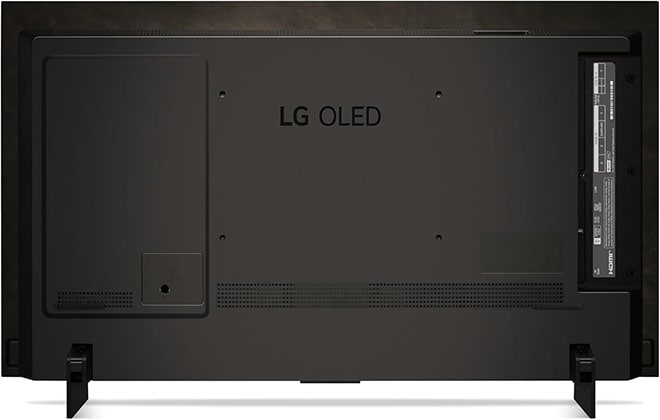
The LG OLED42C4 has a design with legs to better fit on a regular PC desk, but there are no ergonomic adjustments apart from VESA mount compatibility. It has a glossy screen finish for a more vibrant image quality, but it’s reflective.
Connectivity options include four HDMI 2.1 ports, RJ45, tuner, composite-in, both analog and digital audio jacks, three USB 2.0 ports, WiFi, Bluetooth and dual 10W integrated speakers (no subwoofer though).
Alternatives
- LG OLED C3 – the older model, it has the same image quality and performance (no 144Hz overclocking though), so it’s worth considering if you find it at a lower price
- ASUS PG42UQ – a 42″ 4K 120Hz monitor based on the same panel. It can get a bit brighter thanks to its heatsink and it’s overclockable to 138Hz. Further, it uses a matte anti-glare coating that’s better at handling reflections than the glossy surface of LG’s TVs, but it also adds a bit of graininess to the image. However, it doesn’t have any smart features nor Dolby Vision support yet it goes for $1,050 – $1,400
Samsung also offers 42″ – 83″ OLED TVs that are great for console gaming. However, note that their 42″, 48″ and 83″ models actually use LG’s W-OLED panel but don’t support Dolby Vision or DTS audio formats. So, if you’re interested in these sizes, we recommend going with LG’s models.
If you want a 55″, 65″ or 77″ OLED TV, go with Samsung’s S90D models as they feature a QD-OLED panel with a higher color brightness.
MSI MAG 271QPX E2
Best 27″ OLED Gaming Monitor For Consoles
Size: 27″
Resolution: 2560×1440
Panel: OLED
Refresh Rate: 240Hz
VRR: FreeSync, HDMI 2.1 VRR
The Pros:
- Infinite contrast ratio, wide color gamut, high peak brightness
- No backlight bleed or IPS/VA glow
- Plenty of features, including VRR up to 240Hz
- Instantaneous response time speed
- HDMI 2.1
- 3-year burn-in warranty
The Cons:
- Risk of permanent image burn-in and temporary image retention
- Not as bright as mini LED panels
About The Monitor
In case you want a smaller OLED gaming monitor, the MSI MAG 271QPX E2 is for you!
Image Quality
While this monitor has a screen resolution of 2560×1440 and a 240Hz refresh rate, it can actually upscale to 4K 120Hz, making it a great pick for console gamers. It also has an HDMI 2.1 port with VRR support for the PS5 as well as Xbox consoles.
The MSI MAG 271QPX E2 delivers an immersive viewing experience thanks to its wide viewing angles, wide 99.3% DCI-P3 color gamut, instant response times and infinite contrast ratio.
It uses Samsung’s QD-OLED, which allows it to reach a high brightness, up to 1000-nits for < 3% APL, 450-nits for 10% APL and 250-nits for 100% APL.
Design & Connectivity
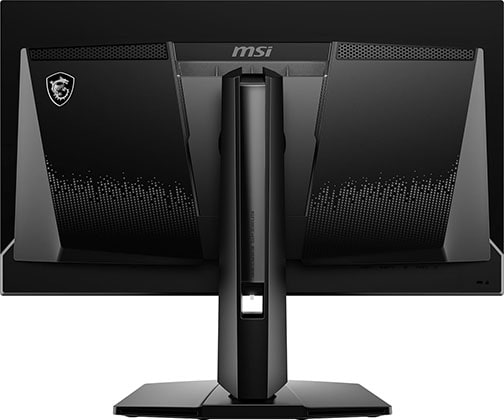
The MSI MAG 271QPX E2 has a sturdy stand with up to 110mm height adjustment, -5°/20° tilt, +/- 30° swivel, +/- 90° pivot and 100x100mm VESA mount compatibility.
The screen has a glossy finish, which makes for a more vivid image quality as there no graininess associated with matte anti-glare coatings, however, it also means that the screen is a bit more reflective. Blacks are also raised when hit by direct lighting, so you’ll have to mind the lighting in your room.
Connectivity options include two HDMI 2.1 ports, DP 1.4 with DSC, USB-C with DP Alt Mode and 15W PD and a headphone jack.
Alternatives
Gigabyte offers a monitor based on the same panel, the Gigabyte Aorus FO27Q2 – it has a USB hub and a built-in KVM switch, but it’s usually a bit more expensive.
You can also find 1440p 240Hz gaming monitors based on LG’s W-OLED panel, such as the ASUS XG27AQDMG with a glossy screen surface and the LG 27GS93QE with a matte anti-glare coating for $750 and $600, respectively.
However, these don’t have as wide color gamut or as high color brightness and they have fringing on small text and fine details due to their RWBG subpixel layout.
MSI MAG 321UP
Best 32″ HDR Gaming Monitor
Size: 32″
Resolution: 3840×2160
Panel: OLED
Refresh Rate: 165Hz
VRR: FreeSync, HDMI 2.1 VRR
The Pros:
- Infinite contrast ratio, wide color gamut, high peak brightness
- No backlight bleed or IPS/VA glow
- Plenty of features, including VRR up to 165Hz
- Quick response time speed
- HDMI 2.1, USB hub
- 3-year burn-in warranty
The Cons:
- Risk of permanent image burn-in and temporary image retention
- Not as bright as mini LED panels
About The Monitor
The MSI MAG 321UP is currently the best value 32″ gaming monitor available!
Image Quality
Just like there are no 1440 120Hz OLED displays, forcing you to get a 1440p 240Hz model, there are no 32″ 4K 120Hz OLED gaming monitors. So, if you want the best 32″ OLED display, you should get the MSI MAG 321UP with a 165Hz refresh rate!
Unlike the LG C4, the MSI MAG 321UP has Samsung’s QD-OLED panel with a higher color volume and a wider 99.3% DCI-P3 color gamut, resulting in more saturated and brighter colors.
It also has excellent brightness performance with 250-nits peak for a 100% white window and up to 1000-nits for small HDR highlights.
The MSI MAG 321UP is factory-calibrated at Delta < 2 and supports VRR, though you may encounter some brightness flickering in dark scenes of games with fluctuating frame rates. You also get the standard gaming features (crosshairs, on-screen timers, a refresh rate tracker, etc.).
Design & Connectivity

The stand of the monitor is sturdy and offers a good range of ergonomics, including up to 110mm height adjustment, -5°/15° tilt, +/- 30° swivel, +/- 10° pivot for balancing and 100x100mm VESA mount compatibility.
It has a heatsink for cooling and a semi-glossy screen finish for a more vivid image, but it’s reflective and raises the black level when hit with direct lighting.
Connectivity options include DisplayPort 1.4 with DSC, two HDMI 2.1 ports with full 48 Gbps and CEC support, USB-C with DP Alt Mode and 15W Power Delivery and a headphone jack.
Alternatives
The MSI MAG 321UP is currently the only 32″ 4K 165Hz OLED gaming monitor available. You can find models with a higher 240Hz refresh rate if you also plan to use the monitor with your PC – in this case, check out our MSI MPG 321URX review.
Innocn 27M2V
Best 27″ 4K HDR Gaming Monitor
Size: 27″
Resolution: 3840×2160
Panel: IPS
Refresh Rate: 160Hz
VRR: FreeSync, HDMI 2.1 VRR
The Pros:
- High peak brightness, high pixel density, wide color gamut
- 1152-zone mini LED FALD
- Quick response time, low input lag
- Plenty of features, including VRR up to 144FPS
- Fully ergonomic stand and rich connectivity options, including KVM and USB-C with 90W PD
The Cons:
- Minor blooming/haloing noticeable in certain scenes
About The Monitor
The Innocn 27M2V offers a true HDR viewing experience thanks to its 1152-zone mini LED FALD.
Image Quality
To start with, the Innocn 27M2V is based on a 27″ IPS panel with a wide 99% DCI-P3 and 99% Adobe RGB color gamut for vibrant colors.
Next, it has a strong 1200-nit peak brightness for punchy HDR highlights, while its 1152-zone full-array local dimming solution further improves the contrast ratio by dimming parts of the image that are supposed to be dark without greatly affecting the parts that are supposed to remain bright.
So, if you don’t want to deal with OLED’s limited brightness and risk of burn-in, mini LED is the way to go for HDR content. However, you note that in some demanding scenes (fireworks, stars in a night sky), the light from small objects bleeds into the surrounding dimmed zones and crates blooming.
As for the performance, the Innocn 27M2V has a rapid 1ms GtG response time speed for zero ghosting in fast-paced games.
Noteworthy features include crosshair overlays, Shadow Balance and various picture presets.
Check out our full Innocn 27M2V review for more information.
Design & Connectivity
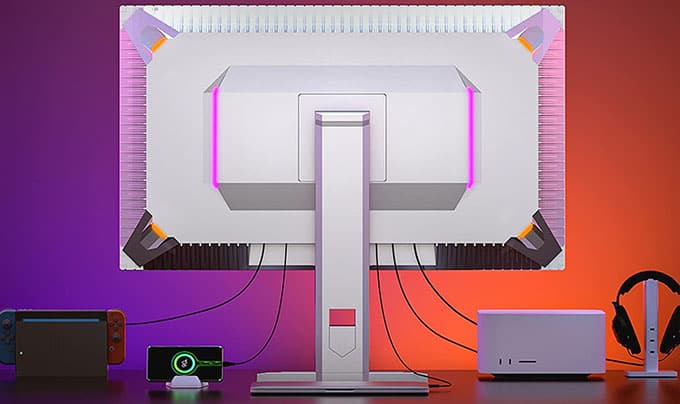
The monitor offers height adjustment up to 120mm, 15° tilt, +/- 15° swivel, 90° pivot and 100x100mm VESA mount compatibility.
Connectivity options include two HDMI 2.1 ports, DisplayPort 1.4 with DSC, USB-C (DP 1.4 Alt Mode and 90W PD), 1 upstream + 2 downstream USB 3.0 ports, a headphone jack, dual 5W integrated speakers and built-in KVM.
Alternatives
- Redmagic GM001J – uses the same panel and 1152-zone mini LED FALD backlight
In case the Innocn and Redmagic models are not available in your region, check out the Cooler Master Tempest GP27U or the Acer XV275K P3, though they have fewer dimming zones (576).
Since the Xbox consoles can only output HDR at 4K UHD, 1440p mini LED monitors, such as the AOC Q27G3XMN with a 336-zone VA panel and the Xiaomi G Pro 27i 1152-zone IPS monitor aren’t great picks for it – they’re worth considering for the PS5 but since they don’t have HDMI 2.1, you won’t have VRR support. Still, they’re the cheapest monitors with proper HDR support at $280 and $360, respectively.
Samsung Neo G7
Best Value 32″ HDR Gaming Monitor
Size: 32″
Resolution: 3840×2160
Panel: VA
Refresh Rate: 165Hz
VRR: FreeSync, HDMI 2.1 VRR
The Pros:
- High contrast ratio and pixel density
- Wide color gamut
- High peak brightness, 1196-zone mini LED FALD
- Quick response time
- Plenty of features, including VRR and MBR up to 165Hz
- Fully ergonomic stand, USB hub
The Cons:
- Minor blooming (in very demanding scenes)
- The aggressive 1000R screen curvature won’t appeal to some gamers
- VRR brightness flickering in dark scenes of games with fluctuating frame rates (expected drawback of OLED and VA panels)
About The Monitor
If you want a larger mini LED display for HDR content, the 32″ Samsung Neo G7 is the best option available given that you don’t mind its aggressive 1000R screen curvature.
Image Quality
The Neo G7 has an 1196-zone mini LED FALD backlight and a peak brightness of 1,200-nits, which allows for an amazing HDR viewing experience with bright highlights.
While it is brighter than OLED displays, its VA panel has a static contrast ratio of ~4,000:1, so you won’t get as deep blacks as that of OLEDs, and some blooming will be noticeable in demanding scenes (such as night sky, fireworks, etc.).
Moving on, it has a rapid 1ms GtG pixel response time speed, supports VRR up to 165FPS for tear-free gameplay and a wide 95% DCI-P3 color gamut.
In some games, VRR brightness flickering can be noticeable, but you can use Samsung’s VRR Control option to prevent this issue – sadly, this introduces micro-stuttering instead.
Check out our full Samsung Neo G7 review for more details.
Design & Connectivity
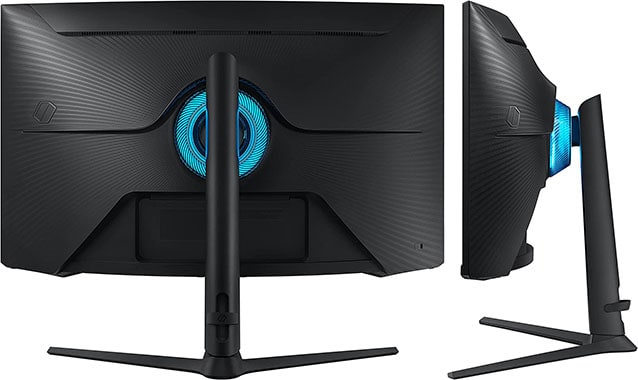
The Neo G7 has an ergonomic stand with up to 120mm height adjustment, +/- 15° swivel, 90° pivot, -9°/13° tilt and 100x100mm VESA mount compatibility.
Connectivity options include DP 1.4 with DSC, two HDMI 2.1 ports with 40 Gbps and DSC, a headphone jack and a dual-USB 3.0 hub.
The screen has a steep 1000R curvature that some users don’t find appealing, some like it and some just get used to it over time.
BenQ EX321UX
Best 32″ IPS HDR Gaming Monitor
Size: 32″
Resolution: 3840×2160
Panel: IPS
Refresh Rate: 144Hz
VRR: FreeSync, HDMI 2.1 VRR
The Pros:
- High pixel density
- Accurate and vibrant colors
- Plenty of features including VRR up to 144Hz
- Fully ergonomic stand and rich connectivity options, including USB-C with 65W PD
The Cons:
- IPS glow and mediocre contrast ratio (as expected from this panel technology)
- Minor blooming/haloing noticeable in certain scenes with local dimming
About The Monitor
Want a 32″ 4K high refresh rate HDR display with a flat screen? We recommend the BenQ EX321UX!
Image Quality
The BenQ EX321UX uses an IPS panel with an 1152-zone mini LED FALD, so it will have more noticeable blooming than the Samsung Neo G7.
However, BenQ EX321UX also has a wider color gamut with 99% Adobe RGB coverage, wider viewing angles and smoother VRR performance!
So, the choice between the two models will mainly come down to what you personally prefer. Both models have a rapid response time speed and a high ~1400-nit peak brightness.
Check out our full BenQ EX321UX review for more information.
Design & Connectivity
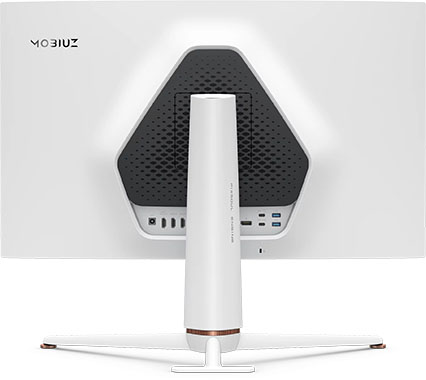
The stand of the monitor is sturdy and offers height adjustment up to 100mm, -5°/20° tilt, +/- 15° swivel and 100x100mm VESA mount compatibility.
Connectivity options include DisplayPort 2.1 (UHBR10), three HDMI 2.1 ports with 48 Gbps (one with eARC, and HDMI CEC), USB-C with DP Alt Mode and 65W PD, a headphone jack and a USB hub (three USB-A 3.0 and two USB-C ports).
Alternatives
- Innocn 32A6V / Innocn 32M2V – cheaper 32″ 4K 144Hz IPS 1152-zone models but they don’t have as good build quality, local dimming implementation or warranty
- Acer Predator X32FP / ASUS PG32UQXR – go for around the same price yet have fewer dimming zones (576)
- ViewSonic XG321UG / ASUS PG32UQX – 1152 dimming zones with the G-SYNC Ultimate module, but they go for ~$2,000, have a slower response time speed and no HDMI 2.1
Buyer’s Guide – How To Pick The Right Console Gaming Monitor
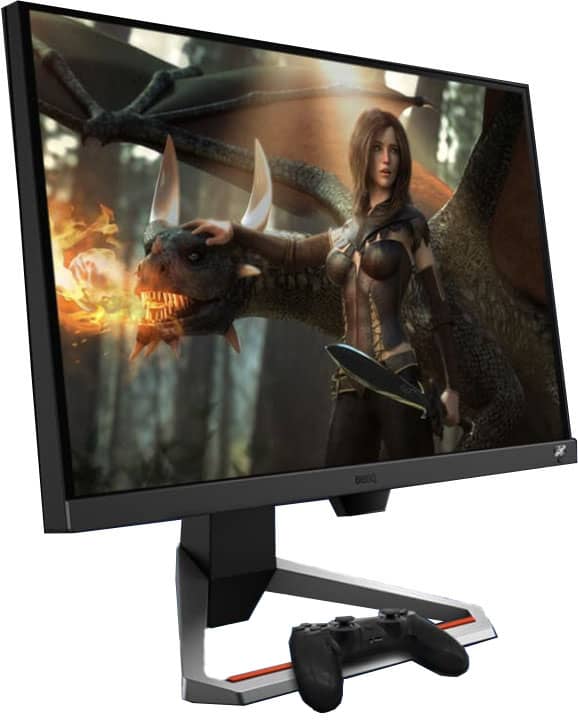
Based on the reviews above, make sure you pick the best monitor for you based on your budget and personal preference regarding screen size, panel type, refresh rate, and resolution.
You also need to take into account whether your favorite games support 120FPS if you want to benefit from 120Hz. Here’s a list of supported games, as well as some additional information you might find useful.
How To Change The Refresh Rate To 120Hz
If you are having trouble selecting 120Hz on your console, try adjusting the following settings:
For Xbox Series X and Xbox Series S:
Under Profile & System, go to Settings -> General -> TV & display options -> Video fidelity & overscan -> Connection. Now, change Auto-detect (Recommended) to HDMI. Go back to TV & display options, and select 120Hz.
To actually see the benefits of 120Hz, you’ll need to play games that support the 120FPS mode including:
- Call of Duty: Black Ops Cold War, Vanguard, Warzone
- Devil May Cry 5 Special Edition
- Dirt 5
- ExoMecha
- Gears 5 (Multiplayer)
- Halo Infinite (Multiplayer)
- Halo: The Master Chief Collection
- Metal: Hellsinger
- Monster Boy and the Cursed Kingdom
- Ori and the Will of the Wisps
- Orphan of the Machine
- Rainbow Six Siege
- Second Extinction
- The Falconeer
- The Touryst
- Fortnite
- Overwatch
- Full list
For PlayStation 5:
Settings -> Saved Data and Game/App Settings -> Game Presets. Now, change Performance Mode or Resolution Mode to Performance Mode.
Next, you’ll need to enable the 120FPS/Hz mode in the video game settings. Note that not all PS5 games support this mode – here are some supported titles:
- Borderlands 3
- Call of Duty: Black Ops Cold War
- Call of Duty: Vanguard
- Call of Duty: Warzone
- Destiny 2
- Devil May Cry 5: Special Edition
- DIRT 5
- Doom Eternal
- F1 2021
- Ghost Runner
- Knockout City
- Quake
- Rocket League
- Tony Hawk’s Pro Skater 1, 2
- WRC 9
- Rogue Company
- Monster Boy and the Cursed Kingdom
- The Nioh Collection
- Tom Clancy’s Rainbow Six: Siege
- Fortnite
Conclusion
These are the best monitors for PS5 and the Xbox Series X/Series S available at the moment! For 1080p 120Hz, the BenQ EX240 is an excellent pick for both consoles.
When it comes to 1440p 120Hz, we recommend the KTC H27T22, the LG 32GP750 or the Samsung Odyssey G6 models – depending on your budget and personal preference.
In case you want to enjoy both 4K UHD and 120Hz, we recommend going with the LG OLED C4 due to its exceptional value for money.
If you want something smaller, the MSI MAG 271QPX E2, the MSI MAG 321UP and the BenQ EX321UX all offer excellent HDR image quality and smooth performance.
Updates +
- November 23, 2024:
– Replaced the Samsung M70D with the KTC A32Q8, the LG 32GP83B with the LG 32GP750 and the MSI MAG 274UPF with MAG274UPF E2. - November 8, 2024:
– Replaced the Acer XV271U M3 with the KTC H27T22, the MSI G281UV with the ASUS VG289Q, the Sceptre U325W-UPT with the Samsung M70D, the LG OLED C3 with C4, the LG 27GS95QE with the MSI MAG 271QPX E2, the MSI MPG 321URX with the MSI MAG 321UP, and the Innocn 32M2V with the BenQ EX321UX. - July 25, 2024:
– Replaced the LG 27GR95QE with 27GS95QE. - May 29, 2024:
– Replaced the ASUS PG329Q with the LG 32GP83B, the Dell G3223Q with the MSI MAG323UPF and the Dell AW3225QF with the MSI MPG 321URX.
– Added the Acer CBL282K as an alternative to the MSI G281UV. - February 8, 2024:
– Replaced the Acer XV272UV with XV271UM3, the Gigabyte M27U with the MSI MAG274UPF and the Acer X32FP with the Innocn 32M2V.
– Added the Dell AW3225QF review summary. - November 24, 2023:
– Checked up on the guide to ensure that our picks are still the best options available. - November 5, 2023:
– Replaced the Gigabyte M32Q with the ASUS PG329Q, the ASUS VG289Q with the MSI G281UV, the Acer XB283KKV with the Gigabyte M27U, and the LG 32UN650 with the Sceptre U325W-UPT. - May 17, 2023:
– Replaced the AOC FV43U with the Samsung S43CG70. - March 20, 2023:
– Replaced the AOC 24G2 with the Gigabyte G24F2, the Samsung Odyssey G7 with G6.
– Added the LG 27GR95QE, the Innocn 27M2V and the Acer X32FP.
– Added a dedicated HDR category. - November 22, 2022:
– Checked up on the guide to ensure that our picks are still the best options available. - November 9, 2022:
– Replaced the LG 27GP83A with the Acer XV272UV, the LG 32GP83A with the Gigabyte M32Q, and the Sony Inzone M9 with the Cooler Master Tempest GP27U. - September 20, 2022:
– Edited the buyer’s guide now that the PS5 supports 1440p 120Hz and 1440p 60Hz modes. - July 5, 2022:
– Replaced the LG 27GP950 with the Sony Inzone M9.
– Replaced the Gigabyte M32U and the MSI MPG321UR-QD with the Dell G3223Q. - February 8, 2022:
– Replaced the Gigbyte M28U with the Acer XB283K.
– Replaced the BenQ EX2510 with the AOC 24G2. - November 25, 2021:
– Checked up on the guide to ensure that our picks are still the best options available. - November 16, 2021:
– Added the MSI MPG321UR-QD.
